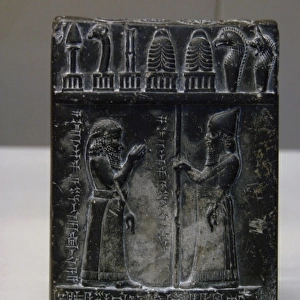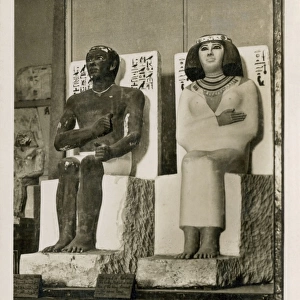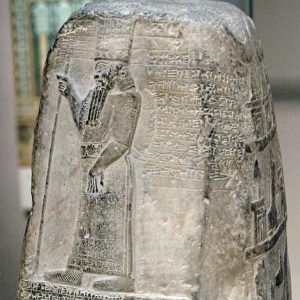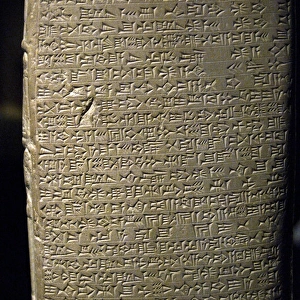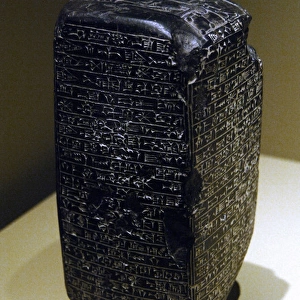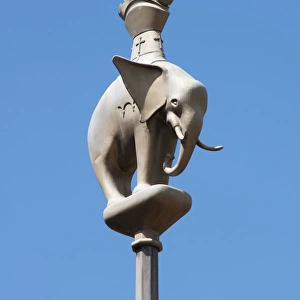Photo Mug > Europe > United Kingdom > England > London > Museums > British Museum
Photo Mug : Mesopotamian Art. Alabaster flower vase shaped as a woman ho
![]()

Home Decor from Mary Evans Picture Library
Mesopotamian Art. Alabaster flower vase shaped as a woman ho
Mesopotamian Art. Alabaster flower vase shaped as a woman holding flowers. Dated between 700-600 B.C. It comes from Sippar. British Museum. London. England. United Kingdom
Mary Evans Picture Library makes available wonderful images created for people to enjoy over the centuries
Media ID 14378668
© Thaliastock / Mary Evans
Alabaster Curly Hold Mesopotamia Mesopotamian Sculpted Vase
Photo Mug
Bring the ancient world to your morning routine with our exquisite Media Storehouse Photo Mugs, featuring the mesmerizing Mesopotamian Alabaster Flower Vase. Dated between 700-600 B.C., this captivating artifact hails from Sippar and is now part of the esteemed British Museum collection in London. Each mug showcases a high-resolution, rights-managed image of the vase, intricately designed as a woman holding flowers. Sip your favorite beverage while admiring the intricate details and rich history of this Mesopotamian masterpiece. A perfect blend of art and function, these mugs make for unique and thoughtful gifts. Embrace the past, one sip at a time.
A personalised photo mug blends sentimentality with functionality, making an ideal gift for cherished loved ones, close friends, or valued colleagues. Preview may show both sides of the same mug.
Elevate your coffee or tea experience with our premium white ceramic mug. Its wide, comfortable handle makes drinking easy, and you can rely on it to be both microwave and dishwasher safe. Sold in single units, preview may show both sides of the same mug so you can see how the picture wraps around.
Mug Size is 9.6cm high x 8.1cm diameter (3.8" x 3.2")
These are individually made so all sizes are approximate
FEATURES IN THESE COLLECTIONS
> Europe
> United Kingdom
> England
> London
> Museums
> British Museum
> Europe
> United Kingdom
> England
> London
> Related Images
> Europe
> United Kingdom
> England
> London
> Sights
> British Museum
> Europe
> United Kingdom
> England
> Posters
> Europe
> United Kingdom
> England
> Related Images
> Europe
> United Kingdom
> England
> Sculptures
> Europe
> United Kingdom
> Related Images
> Historic
> Ancient civilizations
> Mesopotamia
> Ancient Mesopotamian art
EDITORS COMMENTS
This exquisite Mesopotamian artifact, a flower vase shaped as a woman holding flowers, showcases the exceptional craftsmanship and artistic prowess of ancient civilizations. Dated between the 7th and 6th centuries BC, this masterpiece originated from the ancient city of Sippar, located in modern-day Iraq, which was part of the Mesopotamian civilization. The vase is made of alabaster, a prized material for sculpting due to its smooth surface and translucent quality. The woman depicted in the vase is sculpted with intricate details, her curly hair cascading down her shoulders, and her body gracefully holding a bouquet of flowers. The delicate petals of the flowers are expertly carved, adding to the overall beauty and elegance of the piece. Mesopotamian art is known for its intricate designs and symbolic representations, and this vase is no exception. The woman's form is not only an aesthetic pleasure but also holds symbolic meaning. The vase may have been used for religious or ceremonial purposes, with the woman representing fertility and the flowers symbolizing rebirth and renewal. This precious relic now resides in the British Museum in London, England, United Kingdom, where it continues to captivate and inspire visitors from around the world. The intricacies of the carving, the beauty of the alabaster material, and the historical significance of the piece make it a must-see for anyone interested in ancient history and art.
MADE IN AUSTRALIA
Safe Shipping with 30 Day Money Back Guarantee
FREE PERSONALISATION*
We are proud to offer a range of customisation features including Personalised Captions, Color Filters and Picture Zoom Tools
SECURE PAYMENTS
We happily accept a wide range of payment options so you can pay for the things you need in the way that is most convenient for you
* Options may vary by product and licensing agreement. Zoomed Pictures can be adjusted in the Cart.





